
The discoloration seen under the skin with a bruise is due to damage to tiny blood vessels and blood leaking out of the vessel and into the surrounding tissue. It occurs when those vessels are damaged or broken by a blow to the skin. If this is occurring when you are running, you are probably striking your knees together. Several conditions may cause that kind of contact.
Changes in Terrain
Uneven terrain, like trail running or even the slope of the beach, can be the culprit. These surfaces require better balance and can result in your legs moving in more erratic patterns; occasionally, stride imbalances lead to knees coming into contact with each other. Sometimes the internal bruising may be due to a single hit of one knee against the other. Other times, it may be an accumulation of small contacts over the course of your run.
Changes in Shoes
Running shoes more than a year old or that have logged more than 400 miles need to be replaced. Your shoes may wear even faster if you are a larger runner. Running shoes provide not only shock absorption but help to control supination and pronation, two conditions that create abnormal movement in your feet and translate up to your knees. If you have one of these control problems, you may be striking your knees as your body compensates.
Changes in Stride or Gait
You may have altered your gait, if you have recently made a change in the way you run. Your gait is the pattern of movement of your legs as you run. If you have been a heel-toe runner and have changed to land more on the ball of your foot or your toes, you may have also changed your gait and caused your knees to come into contact with one another. Adopting a longer or shorter stride could be another factor contributing to knee bruising.
Managing and Preventing Knee Bruises
If you have knee bruises, you should treat them with ice packs or cold compresses. Wrap the ice in a towel and apply directly to the skin for about 10 minutes. The ice will reduce the blood flow to the area and limit the extent of the bruise and also reduce inflammation. Paying close attention to your gait while you run should reveal the point in your run when your knees contact each other and you can modify your gait accordingly.
Related Articles
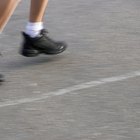
Characteristics of Good Running Shoes

How to Break in Man-Made-Leather Shoes

Shoes That Elongate the Leg

How to Roughen Up the Soles of Your ...

What to Put on Shoes to Prevent ...

Pros and Cons of Rocker Sole Sneakers

How to Lower a Boot Heel

What Kind of Dress Should You Wear If ...
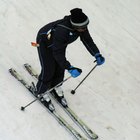
How Can I Tell What Model Oakley Radars ...
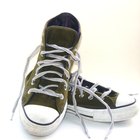
The Differences in Men & Women's Shoes

How to Fade & Distress My Jeans
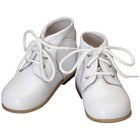
How to Make Rubber Soles Less Slippery

What Type of Shoes Should Be Worn for ...
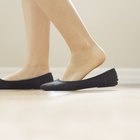
How to Stop a Heel Slip

How to Make Your Sneakers Fit Better if ...

How to Avoid Bending Your Uggs

How to Keep Toes From Squeezing Out of ...
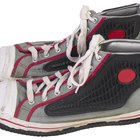
Low Vs. High-Top Athletic Shoes

How to Keep Your Pant Legs in Your Boots

The Differences Between a Flip-Flop and ...
References
Writer Bio
Greg Cooper began writing in 2007 with his book "The Reasonable Radical." He completed undergraduate work at West Virginia University and received his Doctor of Chiropractic from Sherman College. Cooper taught spinal manipulation in orthopedic hospitals in China and was part of a sports medicine team for the 1992 Olympic trials.
Photo Credits
Jupiterimages/BananaStock/Getty Images